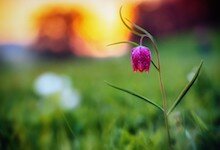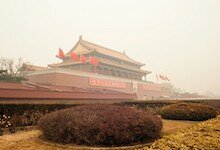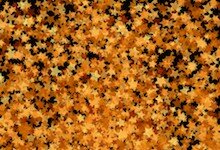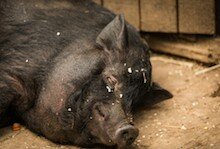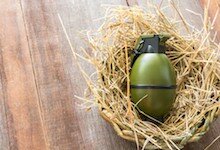Mitsuharu Kaneko (1895–1975)
Born the third son of Ohga Kazukichi and Ryo, and named Yasukazu, Kaneko Mitsuharu was adopted at age two by Sumi, the 16-year-old wife of Kaneko Sohtaroh, hence his family name Kaneko. The personal name Mitsuharu he concocted for himself sometime after he had started publishing his poems.
Kaneko’s real father, Kazukichi, was a failed businessman who is said to have agreed to the whim of a teenager to adopt one of his sons, glad to have fewer mouths to feed. In contrast, his adopted father Sohtaroh was a successful company executive and well-to-do enough to let his young wife Sumi pamper their adopted son to her heart’s content. Furthermore, Sohtaroh, priding himself on being suave in the ways of the pleasure quarters, and liberal to the point of indifference, let the boy do as he pleased. He did not object when the young man, aged sixteen or seventeen and pretending be as suave, brought women from the pleasure quarters back to his house. To his credit (if anyone can be given credit for such things), Sohtaroh did not even object when Sumi took a young man in the neighborhood as a lover to live with her in his house.
Kaneko, a prodigy, was an academic failure. He had to repeat one grade at the prestigious Gyohsei (Venus) Junior High School (today’s equivalent of high school), which was established in 1888 by French Catholics. He entered Waseda University but dropped out, entered Tokyo School of Arts to study Japanese painting but dropped out, entered Keio University to study English but dropped out – all that in the space of a mere two years, from 1914 to 1916. It didn’t help that he was prone to illness, including lung problems.
Still, while at junior high school, he was drawn to Chinese classics and the Edo literature imbued with it, and for a couple of years he did nothing but read and collect works in the two genres. As a result, he acquired an unusually large amount of knowledge of unfamiliar Chinese characters and ancient Chinese phrases, as is evident in many of his poems, especially the early ones. In addition, while a university student, he began reading Western writers, beginning with Schopenhauer, Poe, Oscar Wilde, Mikhail Artsybashev, Baudelaire, Whitman and Edward Carpenter. Though his tenure at the arts school did not last for more than several months, his painterly skills were good enough to enable him to earn occasional money some years later as he travelled abroad penniless. (His paintings included a good deal of pornography, some of which is now on the Internet. (1))
A turning point of sorts came three years after Kaneko inherited a large sum on Sohtaroh’s death in 1916. Suzuki Kohjiroh, one of Sohtaroh’s antique dealers, offered to take Kaneko to Europe with the aim of training him in his business if he was willing to pay for his expenses. Kaneko agreed, and in February 1919 left for Europe. After two months in London, Suzuki decided that Kaneko was not really suited to antique-dealing and left him in the care of the Belgian netsuke collector Ivan Lepage. As a result, Kaneko lived just outside Brussels for nearly a year and a half, studying Belgian and European art, as well as ukiyoe and other Japanese art that was still popular in Europe. (You often learn more about your country while being outside it.) More importantly, he was able to dedicate himself to the reading of European poets – Emile Verhaeren and his predecessors, as well as the Parnassians.
At the end of 1920 Kaneko moved to Paris, then went back to Japan. After a year's seeming inertia, perhaps overwhelmed by the European experience, he plunged into literary activity. At the start of 1922, he became editor of the poetry magazine Rakuen (Paradise), with its editorial office in his house. His first non-self-published book of poems, Koganemushi (Japanese Beetle) (2), came out in July 1923 – two months before the Great Kanto Earthquake that rendered a million people homeless, including himself. In March 1925, he published a collection of Verhaeren’s poems, and in August a selection of French poems, both in his translation. However, by the middle of that year he had run through his inheritance, and that effectively turned him into a vagabond for seven years, until his relatives set up a cosmetics company and employed him as a copywriter.
Perhaps because he was a born bohemian, having no steady income did not prevent him from travelling abroad. His first foreign trip after returning from Europe was to Shanghai (and other Chinese cities) in April and May 1925. As on his subsequent trips, he went there with Mori Michiyo (1905–1977), an aspiring poet-novelist he had married in July of the previous year. (3) He made a second trip to Shanghai from March to May 1927, although this time to explore prospects for some money-making venture. He found none. His third trip, again to look for a similar opportunity, was to Europe. It is not clear for how long Kaneko initially thought he might be away, but the trip would last three and a half years, beginning with four months in China from December 1928.
Here, we should note that the more or less clear-cut sense of China as a state that we take for granted today did not exist at the time, especially for venturesome Japanese. “The places a Japanese could go to most casually, without a passport, were Manchuria and Shanghai,” Kaneko wrote in one of his autobiographical accounts, Dokuro-hai (Skull Cup), in 1971. By the 1920s the sense that Manchuria was Japanese territory was taking hold, whereas Shanghai was a carefree, careless cosmopolitan city. “Though these may have been the places you went to when you were driven up against the wall, each had different nuances: Manchuria was where you went with your wife and children to plant pine and cedar, whereas Shanghai was where a loner went to drop out of sight of those he knew for a couple of years so the excitement he’d created might die down.”
After leaving China, at any rate, and before reaching Paris, which was his final destination, Kaneko wandered through Hong Kong, Singapore, Jakarta and elsewhere. It was in Singapore, in November 1929, that, for lack of travel funds, he sent Michiyo off to France, alone, with the understanding that he would follow. To do so, he then visited a round of plantation owners in the Malay Peninsula to sell his paintings. The peddling was a success. He went back to Singapore and took a ship to Marseille in December.
In January 1930 Kaneko finally arrived in Paris, where he would end up doing, as he later said, “everything except male prostitution”, largely because of the French ban on employment of foreigners. He put up with this hardscrabble life for over a year, then fled, in the spring of 1931, to Brussels to seek help from Lepage. Unlike his first sojourn in that city, this one was tough, although, through Lepage, he in time managed to mount a show of his paintings and make enough money to take a ship from Marseille in October.
Arriving in Singapore, he then travelled around the Malay Peninsula again, until he learnt of the illness of his son Ken, seven years old at the time, and hurried back to Japan. That was in May 1932. From the end of October 1937 to mid-January 1938, Kaneko and Michiyo travelled through northern China, but this time they were adequately financed. (4)
Drawing on his travels through South-east Asia, Kaneko produced two great works: the book of poems Same (Sharks), published in 1937, and the prose account Mareh Ran’in kikoh (Malay and Dutch East Indies Travelogue), in 1940. Both capture South-east Asia under colonial rule in an unforgettable manner – with a series of “immovable images” etched with the “sharpest words” of “the best Japanese sensibility” to quote Kaikoh Takeshi (1930–1989), who some decades later became one of the most widely travelled Japanese writers.
It is possible that those travels overseas in his thirties, with little or no money, helped turn Kaneko into “a domestic exile” and “an étranger” – an observer of things foreign and domestic with few illusions, and with a good dose of skepticism. This became clear in the anti-war poems he later wrote. From the latter part of the 1930s political repression within Japan increased, and its conduct in China provoked mounting international criticism. This became more severe after Japan went to war, simultaneously, with the United States, Britain and Holland in December 1941, and lasted until Japan’s defeat in August 1945.
Nonetheless, Kaneko continued writing anti-war poems even after all prospects for publishing them disappeared, and in this he stood out. The majority’s reaction, a patriotic fervour, is understandable to some degree. For the preceding eighty years the Japanese had struggled with an inferiority complex toward the West. Some well known writers fell silent or wrote innocuous things, but a great many went along with Japan’s militarism that was, in the initial phase of its challenge to Western hegemony, spectacularly successful. Prominent among them were the poets Takamura Kohtaroh (1883–1956) and Noguchi Yonejiroh ( Yone Noguchi; 1875–1947), though their conversion, if it was that, was by no means sudden. Takamura, who studied in the United States and Europe from 1906 to 1909 and became a passionate advocate of Western values upon his return to Japan, became an overt supporter of Japan’s military expansion only during the 1930s. Noguchi, who made his name as a writer in the US (and was briefly Kaneko’s professor at Keio), likewise turned himself into an apologist for Japan’s imperialist policies.
*
Kaneko, who was born in 1895, the year Japan won its first imperialist war, went on to live thirty years after the subsequent period of Japan’s bombastic international behaviour ended in a crushing defeat. During his long life he saw Japan rise, fall and recover, with its infatuation with the West, resentment of it that ended in a disastrous war, and then the subsequent round of wholesale adulation and imitation. Through it all, he stuck to a bohemian life. He was a loner who got along well with a whole range of people, “not a leftist even as he was a poet of resistance”, an astonishing feat for someone of his period (5), or so wrote the anarchist writer who edited Kaneko’s complete works, in 15 volumes, soon after his death in 1975.
Kaneko’s assessment of his own life was modest, bohemian-style, if you will. Writing in his early sixties an account of his life as a poet, appropriately titled Shijin (The Poet), he reflected:
. . . some of us may wonder and marvel how we’ve been able to spend our whole life with an unexpected line of work, but realising that we’ve reached such an age as to be unable to do anything about it even if we thought about it, we decide to compel ourselves to find something worthwhile, albeit reluctantly, in the years ahead of the life we didn’t want. That’s what we usually do. There’s something about us human beings that’s piteous and lovely.
Notes
(1) A selection of Kaneko's paintings.
(2) The Japanese beetle as an invasive species has acquired a terrible reputation in the United States. In Japan, however, the beetle, like many other insects, is looked upon fondly, although recently there have been some warnings about the agricultural damage it can cause. The Japanese name for the beetle, derived directly from Chinese, translates literally as “golden bug”.
(3) Then nineteen, Michiyo was expelled from normal school when her marriage came to light.
(4) A few months earlier the China Incident had broken out, and the period of the couple’s visit corresponded to that of intense battles in central China, including what was later to be known as the Nanking massacre. Military censorship was tight and Kaneko probably heard little about these battles, except for reports of “the Imperial Army’s lightning advances”.
(5) Akiyama Kiyoshi, Kaneko Mitsuharu Zenshuh, Vol. 15 (Chuhoh Kohron Sha, 1977), p. 604.
Hiroaki Sato is a leading translator of Japanese poetry into English, who, with Burton Watson, won the 1982 PEN American Center Translation Prize for From the Country of Eight Islands: Anthology of Japanese Poetry (Anchor Books, 1981; reprint, Columbia University Press, 1986) and the 1999 Japan–United States Friendship Commission Japanese Literary Translation Prize for Breeze Through Bamboo: Kanshi of Ema Saik (Columbia University Press, 1997). Among his prose translations are Legends of the Samurai (Overlook, 1995) and My Friend Hitler and Other Plays of Yukio Mishima (Columbia University Press, 2002). His recent books are Miyazawa Kenji: Selections (University of California Press, 2007), Nishiwaki Junzabur: Poems (Green Integer, 2007), and Japanese Women Poets: An Anthology (M.E. Sharpe, 2007). He writes a monthly column, ‘The View from New York’, for the Japan Times. Sato is a senior research fellow at JETRO New York.


